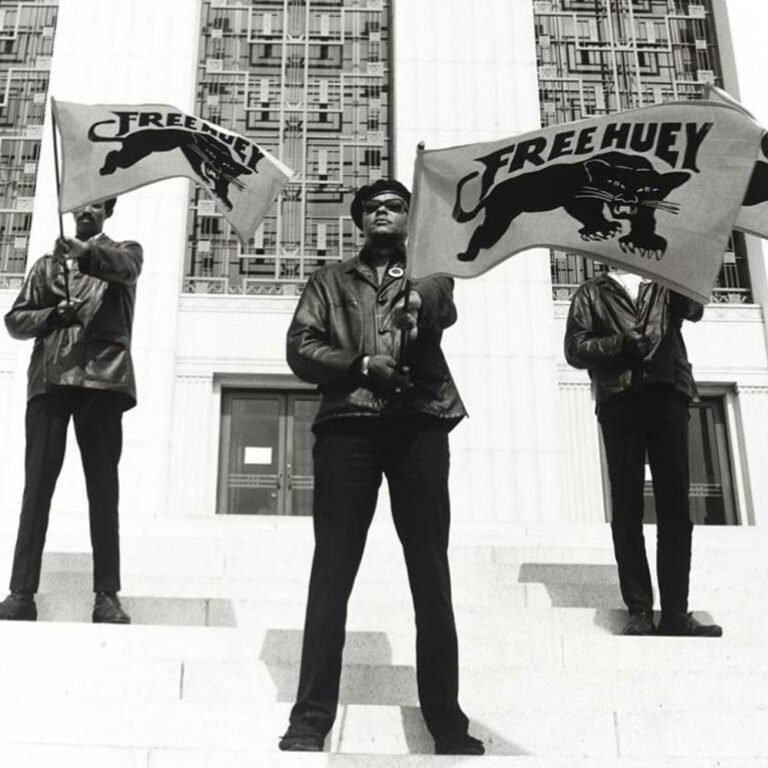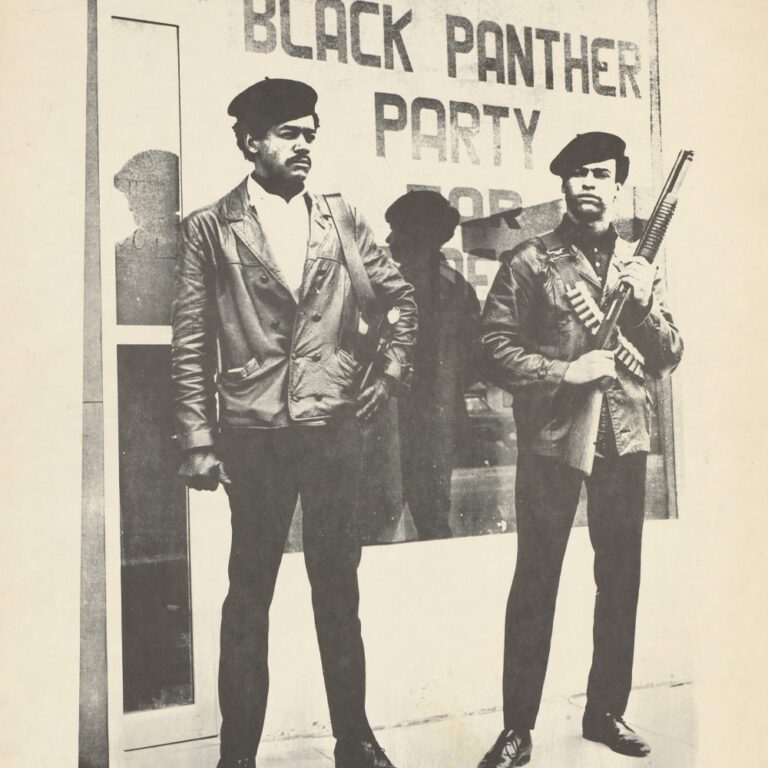Black Panther Party


Collection of the Smithsonian National Museum of African American History and Culture

Collection of the Smithsonian National Museum of African American History and Culture
About the Black Panther Party
Founded in 1966 in Oakland, California, the Black Panther Party for Self Defense was the era’s most influential militant black power organization.
Its members confronted politicians, challenged the police, and protected black citizens from brutality. The party’s community service programs – called “survival programs” – provided food, clothing, and transportation. Rather than integrating American society, members wanted to change it fundamentally. For them, black power was a global revolution.
Organizing a Revolutionary Party
Huey Newton and Bobby Seale, young political activists in Oakland, California, were disappointed in the failure of the civil rights movement to improve the condition of blacks outside the South. They saw brutality against civil rights protesters as part of a long tradition of police violence and state oppression. They immersed themselves in the history of blacks in America. In 1966 they organized young, poor, disenfranchised African Americans into the Black Panther Party.
Like Malcolm X, the Black Panthers believed that nonviolent protests could not truly liberate black Americans or give them power over their own lives. They linked the African American liberation movement with liberation movements in Africa and Southeast Asia.
To Serve the People
Local chapters of the Panthers, often led by women, focused attention on community “survival programs.” They organized a free breakfast program for 20,000 children each day as well as a free food program for families and the elderly. They sponsored schools, legal aid offices, clothing distribution, local transportation, and health clinics and sickle-cell testing centers in several cities. These activities provided concrete aid to low-income communities and drew support for the Panthers.
Advocating for Community Reforms
Although created as a response to police brutality, the Black Panther Party quickly expanded to advocate for other social reforms. Among the organization initiatives, they campaigned for prison reform, held voter registration drives, organized free food programs which included food giveaways and a school breakfast program in several cities, opened free health clinics in a dozen cities serving thousands who could not afford it, and created Freedom Schools in nine cities including the noteworthy Oakland Community School, led by Ericka Huggins from 1973 to 1981.
Women in Leadership
Women made up about half of the Panther membership and often held leadership roles. Vanetta Molson directed Seattle’s survival programs. Lynn French in Chicago and Audre Dunham in Boston were inspirational local leaders. Elaine Brown became the national chairwoman in 1972. Still, the organization’s members struggled to overcome gender inequality.
Interested in continuing the legacy of the Black Panther Party?
Reach out to us today to learn about how CMG can help you.
